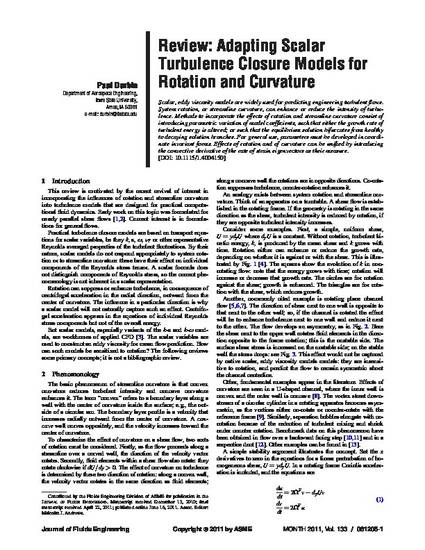
Article
Review: Adapting scalar turbulence closure models for rotation and curvature
Journal of Fluids Engineering, Transactions of the ASME
Document Type
Article
Disciplines
Publication Version
Published Version
Publication Date
1-1-2011
DOI
10.1115/1.4004150
Abstract
Scalar, eddy viscosity models are widely used for predicting engineering turbulent flows. System rotation, or streamline curvature, can enhance or reduce the intensity of turbulence. Methods to incorporate the effects of rotation and streamline curvature consist of introducing parametric variation of model coefficients, such that either the growth rate of turbulent energy is altered; or such that the equilibrium solution bifurcates from healthy to decaying solution branches. For general use, parameters must be developed in coordinate invariant forms. Effects of rotation and of curvature can be unified by introducing the convective derivative of the rate of strain eigenvectors as their measure.
Copyright Owner
American Society of Mechanical Engineers
Copyright Date
2011
Language
en
File Format
application/pdf
Citation Information
Paul A. Durbin. "Review: Adapting scalar turbulence closure models for rotation and curvature" Journal of Fluids Engineering, Transactions of the ASME Vol. 133 Iss. 6 (2011) p. article no. 061205 Available at: http://works.bepress.com/paul_durbin/12/

This article is from Journal of Fluids Engineering, 133 (2011): 061205, doi: 10.1115/1.4004150. Posted with permission.